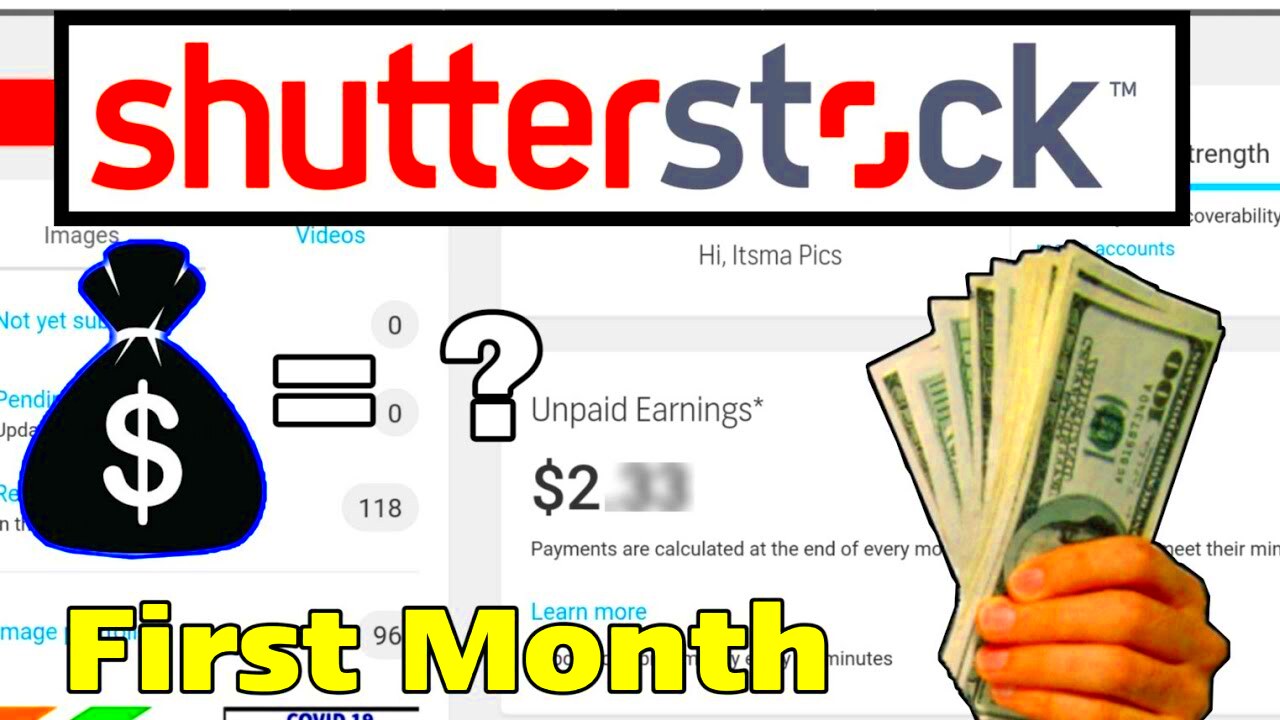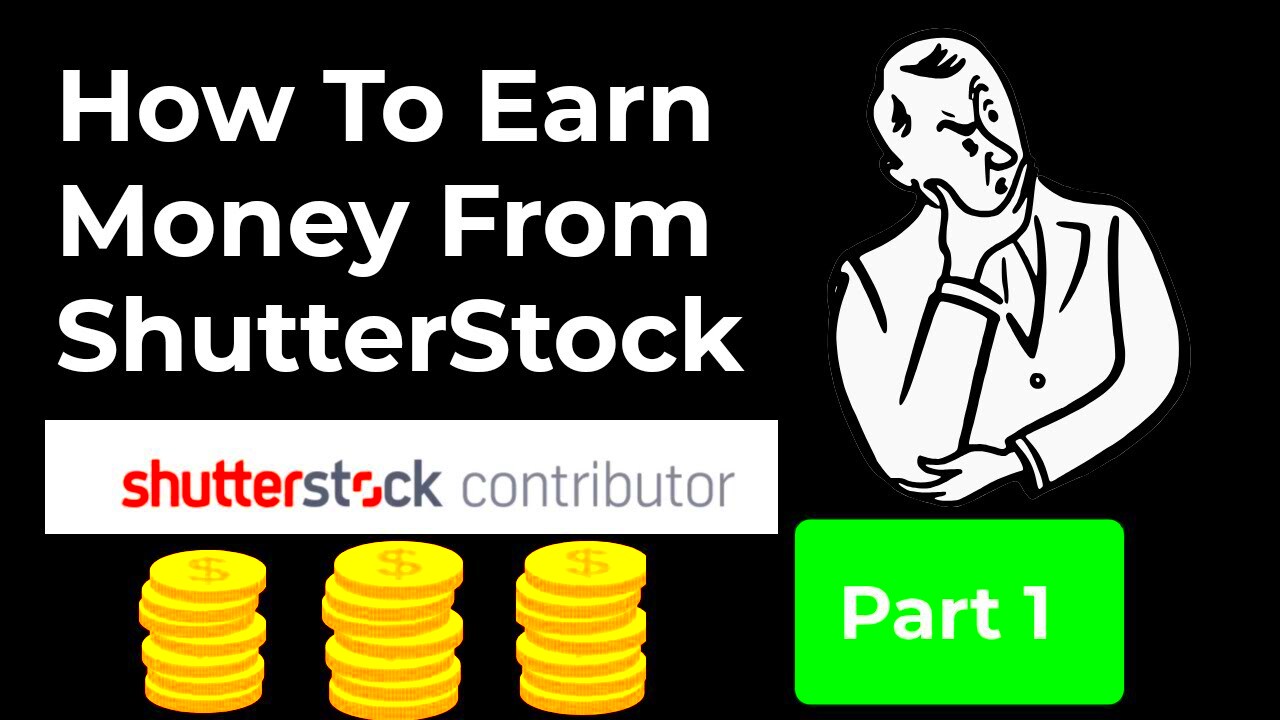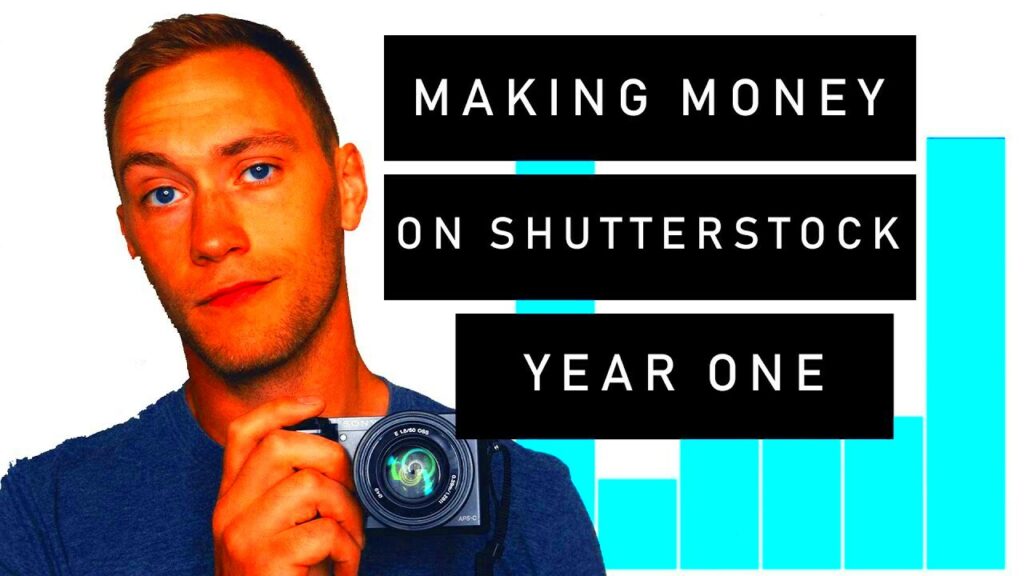Shutterstock is one of the most popular platforms for photographers, illustrators, and videographers to sell their creative work. If you’re considering joining as a contributor, it’s essential to understand how the platform works and how you can earn money. Whether you're a hobbyist or a seasoned professional, Shutterstock provides an opportunity to turn your creative passion into a source of income. In this article, we'll explore how much you can earn and tips to boost your success.
Understanding Shutterstock's Payment Structure

Shutterstock operates on a royalty-based payment system for its contributors. The amount you earn depends on several factors, including the type of license purchased by the customer and your lifetime earnings on the platform. Here’s a breakdown of how the payment structure works:
- Image Subscriptions: Shutterstock offers customers subscription plans. As a contributor, you earn a percentage of the price paid by the customer based on the number of downloads.
- On-Demand Downloads: Customers can purchase individual images, and you’ll receive a higher percentage of these sales compared to subscription downloads.
- Extended Licenses: These licenses allow customers more extensive usage rights, and contributors earn significantly more from these sales.
Additionally, Shutterstock has a tiered system where contributors earn a higher percentage as they reach specific lifetime earning thresholds. The more you sell, the better your earnings rate will be.
Also Read This: How Dailymotion Blends Nostalgia, Fun, and Education Together
How Much Money You Can Make on Shutterstock

The amount of money you can make on Shutterstock varies based on several factors like the quality of your content, the demand for your type of work, and how frequently your files are downloaded. Here's an overview:
| Type of Content | Potential Earnings per Download |
|---|---|
| Images | $0.10 - $120 per download |
| Videos | $1.50 - $200 per download |
| Illustrations & Vectors | $0.10 - $120 per download |
For most contributors, earnings may start small, but over time, as you upload more content and increase your exposure, income can grow steadily. Some top contributors report earning several thousand dollars per month, but results vary greatly depending on effort, portfolio size, and market demand.
Also Read This: Discreet Branding: Remove ‘Powered by Shopify’
Important Factors That Affect Your Earnings

Your earnings on Shutterstock are influenced by a variety of factors. Understanding these can help you make better decisions about your uploads and marketing strategies. Let’s break down the most important aspects:
- Content Quality: High-quality images, videos, and illustrations that meet Shutterstock’s technical standards will be more likely to get approved and attract downloads. Focus on sharpness, proper lighting, and strong composition.
- Portfolio Size: The more content you upload, the more opportunities for downloads. However, don’t just upload for the sake of quantity—ensure you’re maintaining high quality with every submission.
- Content Relevance: Creating content that’s in demand is key. Research trending topics, seasonal themes, and industry needs. Tools like Shutterstock's keyword search can help you identify what's popular.
- Consistency in Uploading: Regularly adding new content keeps your portfolio fresh and increases your chances of appearing in recent searches. Contributors who upload consistently tend to perform better.
- Licenses: Offering extended licenses or premium content can lead to significantly higher payouts. Make sure to categorize your content properly for the right license types.
- Keywords and Descriptions: Use effective, relevant keywords so that your content is easily discoverable by users. Poorly tagged images might get buried, even if they’re high-quality.
Each of these factors plays a role in determining how much you can earn on Shutterstock. By paying attention to these details, you can maximize your earning potential.
Also Read This: Has Braun Strowman Won a Royal Rumble? Exploring the Career of Braun Strowman
Tips for Maximizing Your Earnings on Shutterstock

If you want to make the most out of your Shutterstock portfolio, there are several strategies that can help boost your earnings. Here are some tried-and-true tips:
- Focus on Niche Markets: While popular themes are important, niche markets often have less competition. If you can specialize in an area like healthcare, finance, or education, you may find more success.
- Stay Updated on Trends: Keep an eye on industry trends and seasonal events. Creating content related to current events, holidays, or popular trends can lead to higher download rates.
- Diversify Your Content: Don’t stick to just one type of media. Try creating not only photos but also videos, vectors, and illustrations to attract a broader audience.
- Use Strong Keywords: Use relevant and specific keywords to describe your content. This helps users find your work quickly and ensures it reaches the right audience.
- Engage in Continuous Learning: Shutterstock offers resources for contributors, including webinars and guides. Keep refining your skills and stay informed about changes in the stock media market.
- Optimize Your Upload Schedule: Instead of uploading in bulk, try spreading out your uploads over time. This keeps your portfolio active and regularly refreshed, improving visibility in searches.
By implementing these tips, you can steadily increase your exposure and income on Shutterstock.
Also Read This: Is It Safe to Stream Dailymotion in Classroom Settings
Common Mistakes to Avoid as a Shutterstock Contributor
Even seasoned contributors can make mistakes that limit their earnings on Shutterstock. Here are some common pitfalls to avoid:
- Neglecting Keyword Optimization: Failing to properly tag your work with relevant keywords can significantly reduce your chances of getting found. Always invest time in crafting precise and accurate keywords.
- Uploading Low-Quality Content: Shutterstock maintains high standards for image and video quality. Poor resolution, blurry images, or technical issues can lead to rejections and lower visibility.
- Ignoring Trends: If you only focus on generic content and ignore trends, you may miss out on potential earnings. Keep an eye on trending topics to stay relevant.
- Inconsistent Uploading: Contributors who only upload sporadically often find it harder to build momentum. Consistency is key to staying visible on the platform.
- Overcrowding with Generic Content: Many contributors make the mistake of focusing solely on over-saturated themes like sunsets or nature. While these topics are beautiful, the competition is fierce. Find your unique angle or niche instead.
- Not Engaging with the Community: Shutterstock has an active contributor community. Failing to participate in forums, webinars, or discussions can mean missing out on helpful advice and opportunities to improve your craft.
Avoiding these common mistakes can set you on a clearer path to success and improve your overall earnings on Shutterstock.
Also Read This: Step-by-Step Guide to Upload Videos on Dailymotion from Mobile
Success Stories of Top Shutterstock Contributors
Many contributors have transformed their Shutterstock portfolios into a significant source of income, and their stories offer valuable insights for newcomers. While each journey is unique, certain patterns emerge among the most successful contributors.
- Success Through Niche Specialization: Some top Shutterstock contributors have found success by focusing on specific niches. For instance, a wildlife photographer who concentrated on rare animals and natural landscapes saw exponential growth by catering to a targeted audience. Specializing in a niche that is both in demand and underrepresented can give your portfolio a competitive edge.
- Consistency and Volume: Another common factor among successful contributors is their consistent approach to uploading content. One contributor, who is now earning thousands of dollars monthly, began with a few hundred images and gradually built up their portfolio to include thousands of high-quality files. Over time, this portfolio turned into a passive income stream.
- Diversification of Content: Some contributors achieved success by diversifying their portfolios. By not limiting themselves to just one type of content—such as only images or only videos—they attracted a wider audience. A videographer who started out uploading clips of cityscapes and nature now earns a substantial income after expanding into drone footage and time-lapse videos.
- Adapting to Market Trends: Adapting quickly to trends also proves successful. For example, one contributor started creating remote-work-related content during the COVID-19 pandemic, capitalizing on the increased demand for images reflecting virtual offices and home setups. Their ability to react to market shifts resulted in a huge increase in downloads.
These stories emphasize the importance of persistence, strategic content creation, and continuous learning in maximizing success on Shutterstock.
Also Read This: How to Convert Dailymotion Videos to MP3 in a Simple and Effective Way
Frequently Asked Questions (FAQ)
Here are some of the most common questions Shutterstock contributors have:
- How do I get paid on Shutterstock? Shutterstock pays contributors through multiple payment methods, including PayPal, Payoneer, and Skrill. You can set your payment threshold, and once you reach it, payments are processed at the beginning of each month.
- What type of content sells best? The best-selling content varies depending on trends, but generally, photos and videos of people, technology, business, and nature are popular. Seasonal content, like holiday-related images, also tends to perform well.
- Can I submit content that I’ve sold on other platforms? Yes, Shutterstock allows non-exclusive contributors to sell their work on other platforms. However, you must follow each platform's licensing rules to avoid conflicts.
- How much do I earn per download? The earnings per download vary based on factors like the type of license and your contributor tier. You can earn anywhere from a few cents to over $100 per download, depending on the specifics.
- What happens if my content gets rejected? If your content is rejected, Shutterstock provides feedback on the reason. Common reasons include technical issues like poor lighting or composition. You can review the feedback and resubmit improved versions.
- How can I improve my search visibility? To improve visibility, focus on writing accurate, detailed descriptions and using relevant keywords. This will help potential buyers find your content more easily in searches.
Conclusion: Key Takeaways for Shutterstock Contributors
Making money on Shutterstock requires patience, creativity, and a willingness to learn. By focusing on quality content, understanding market demand, and consistently uploading, contributors can build a solid portfolio that generates ongoing income.
Here are the key takeaways for maximizing your Shutterstock success:
- Focus on Quality and Relevance: Ensure your work is high-quality and aligned with current market needs. Stay up-to-date with trends to create content that will sell.
- Be Consistent: Regularly upload new content to keep your portfolio active and visible to buyers. Consistency often leads to higher exposure and more downloads.
- Use Effective Keywords: Accurate, descriptive keywords are essential for making your content easy to find. Properly tag your content to boost visibility.
- Learn from Top Contributors: Study the success stories of top contributors and apply their strategies, such as diversifying content or focusing on a niche.
- Engage with the Shutterstock Community: Participate in forums, webinars, and contributor resources to stay informed about best practices and evolving market trends.
By following these strategies and learning from others’ experiences, you can increase your chances of success and potentially turn Shutterstock into a reliable source of income.
